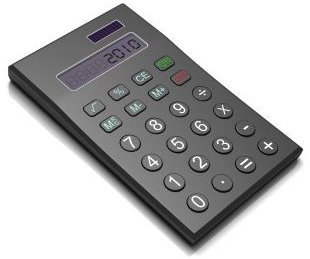The Downside to Exchange Traded Funds
What Are Exchange Traded Funds?
Exchange traded funds (ETF) were created by financial institutions in the 1990s for hedging and keeping cash active for short periods of time. Now they’re available to all investors. They offer a good number of advantages over mutual funds, but, as with any other investment, there is another side to them that can be somewhat inconvenient or even disastrous if left neglected.
ETF Advantages
Exchange traded funds (ETFs) are a group of investment items that are chosen in such a way that the price movements of the group accurately reflect the price movements of a market index or sector that it is supposed to follow. Almost any market that is tradeable has an ETF. Some of their advantages are:
- Costs - Commissions and management fees are historically lower than those of mutual funds.
- They trade like stocks - They can be sold anytime which gives most of them a good amount of liquidity.
- Diversification - Because one share of an ETF represents hundreds or thousands of securities in the fund, losses are spread throughout the fund, producing much less of an effect than being invested in one or a few securities.
- Tax efficiency - Gains are taken when ETF shares are sold by individual investors and the payment of capital gains taxes is completely in the investor’s hands. A mutual fund immediately passes on the capital gains from its selling activity to its investors.
- Transparency - Most index funds publish a list of their holdings daily so investors know exactly what they own at any time.
The Disadvantages of ETFs
Though the advantages of ETFs over other types of funds are appealing, there is a downside to exchange traded funds that an investor might not see or be looking for when considering an investment. Today’s market for trading ETFs is increasing as more and more ETFs are being launched. This gives rise to some thinly traded markets with a low degree of liquidity, creating higher bid/ask spreads.
Profit prospects may be lower because of the high degree of diversification in a fund. They can also be lower in small sectors that are riskier with ETFs comprised of small groups of securities. If the price of one is reduced it has a greater affect on the price of the entire ETF increasing its volatility.
ETFs occasionally sell off holdings to bring the price of the fund closer to the market index or sector that it is supposed to be following. This rebalancing can produce unexpected capital gains or losses and unexpected taxes added to the fund’s investors.

Buying and selling an individual stock that the investor knows carries the same commissions without the management fees of ETFs and higher profits can be taken if the investor can bear the higher risk.
Leveraged ETFs can be double or triple leveraged, which magnifies the gains significantly, but also does the same for losses.
The funds assets may not be there or allocated in an unexpected way. The underlying investment instrument may not be there due to buying on margin to attain a high degree of leverage. Physical commodities, such as metals, may be allocated in a way that could be unexpected (such as 80% allocated to gold) if an investor hasn’t done his homework to find out this information.
Dividend yields can be lower in a traditional open-ended ETF than from an individual stock or a small group of stocks because they are averaged out in the fund which tracks a broad market. These returns are immediately reinvested in the fund and paid to all the investors monthly or quarterly.
ETFs are quite vulnerable to the vagaries of high frequency trading due to the fact that they have become increasingly popular with investors for electronic trading. When the “flash crash” of May 6, 2010 occurred, the DOW dropped 1,000 points in fifteen minutes. Many ETFs were hit quite hard as automatic stop-loss orders were activated.
Summary
Exchange traded funds are definitely a beneficial addition to the list of choices investors have to diversify a portfolio. They can be bought and sold like stocks, costs are low, the investor has more control over capital gains and they’re very transparent. Like mutual funds, there are other concerns that are not so advantageous that are inherent to what they are. These are usually due to the fact that they are a basket of securities and such things as costs and dividends are averaged from all of the items in the basket when investing in one stock that an investor knows could yield higher amounts.
References
-
Wall Street Journal, “A Focus on ETFs,” http://online.wsj.com/ad/focusonetfs/history.html
Gustke, Constance, “Are Exchange-traded funds dangerous?,” http://www.bankrate.com/finance/investing/are-exchange-traded-funds-dangerous-1.aspx
Jobman, Darrell, “Trading Commodities in Exchange Traded Funds,” http://www.traderplanet.com/newsletter_articles/view/4913/distribution:10
Cherewyk, Peter, “Advantages And Disadvantages Of ETFs,” http://www.investopedia.com/articles/exchangetradedfunds/11/advantages-disadvantages-etfs.asp#aszz1PTy3YXMy
Undisclosed, “History of Exchange-Traded Funds,” http://www.etfguide.com/exchangetradedfunds.htm
-
Images:
Balloons with dollar signs, FreeDigitalPhotos.net/digitalart http://www.freedigitalphotos.net/images/search.php?search=balloons+with+dollar+signs&cat=
Calculator, FreeDigitalPhoto.net/renjith Krishnan http://www.freedigitalphotos.net/images/search.php?photogid=721&search=calculator
